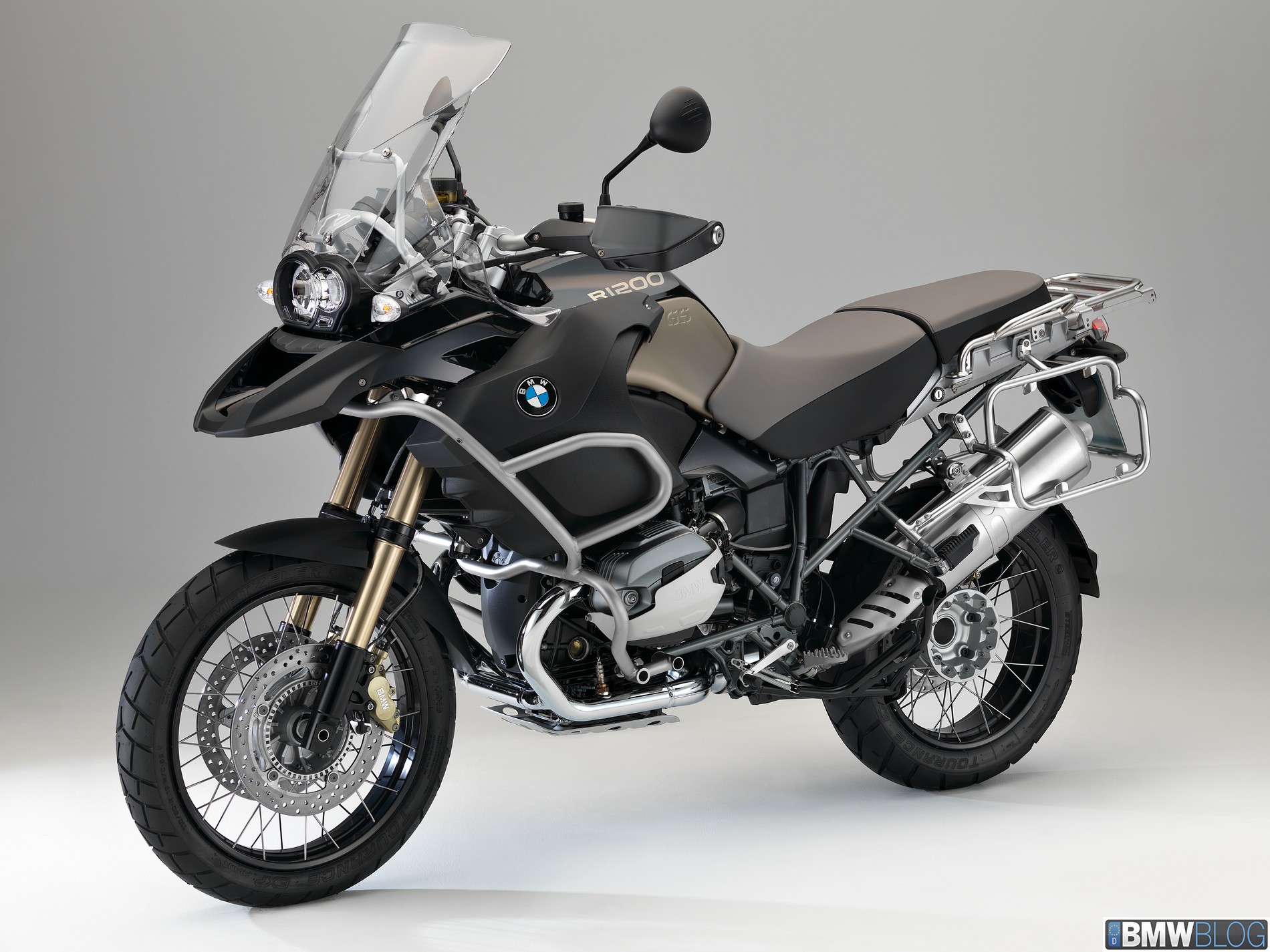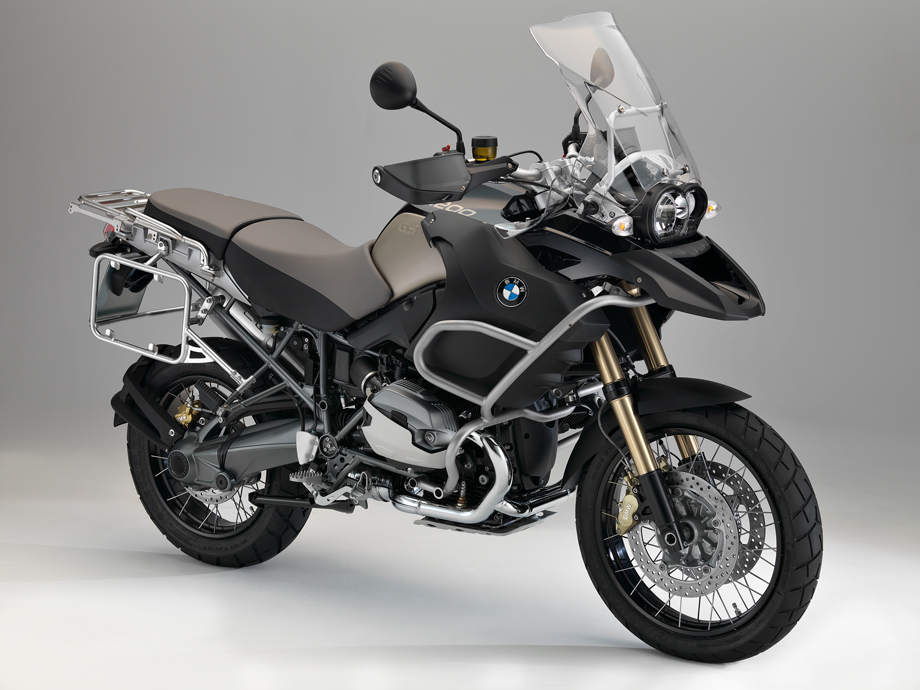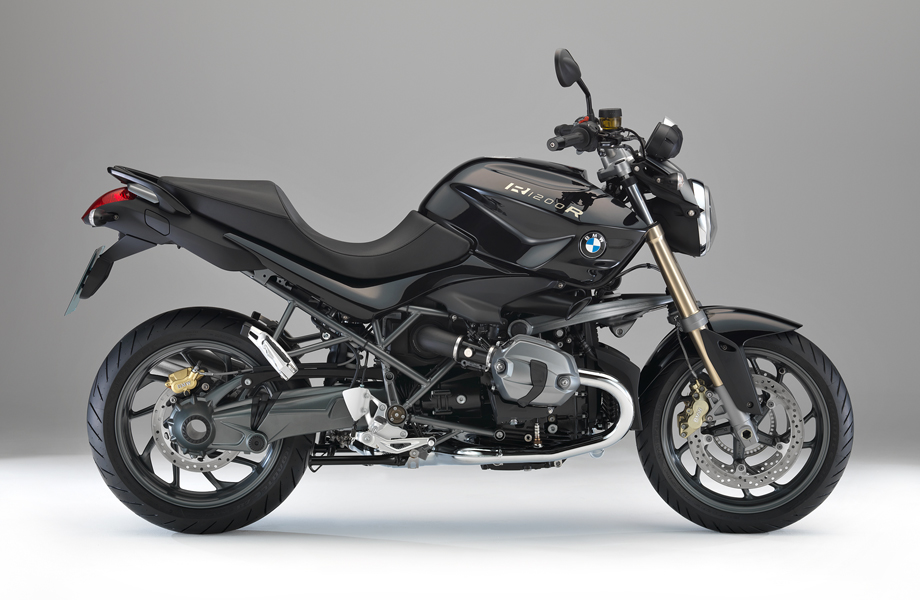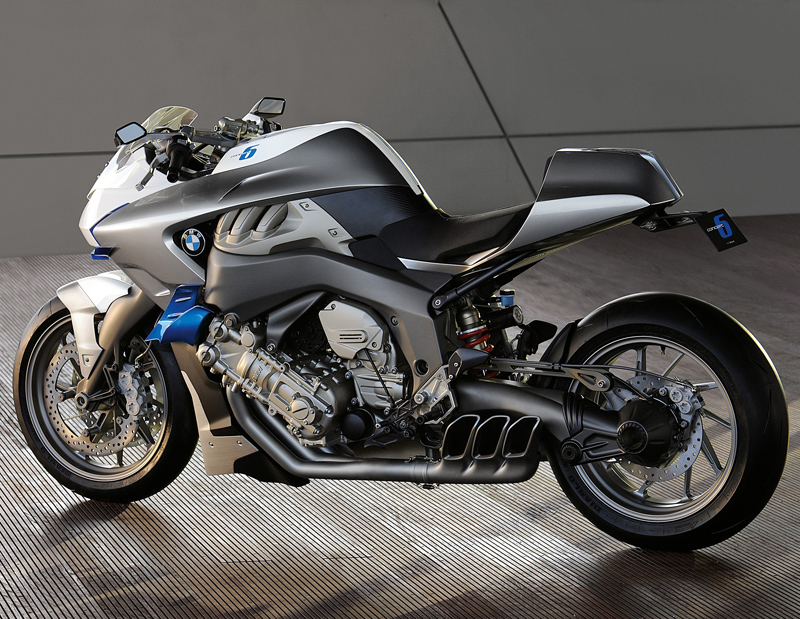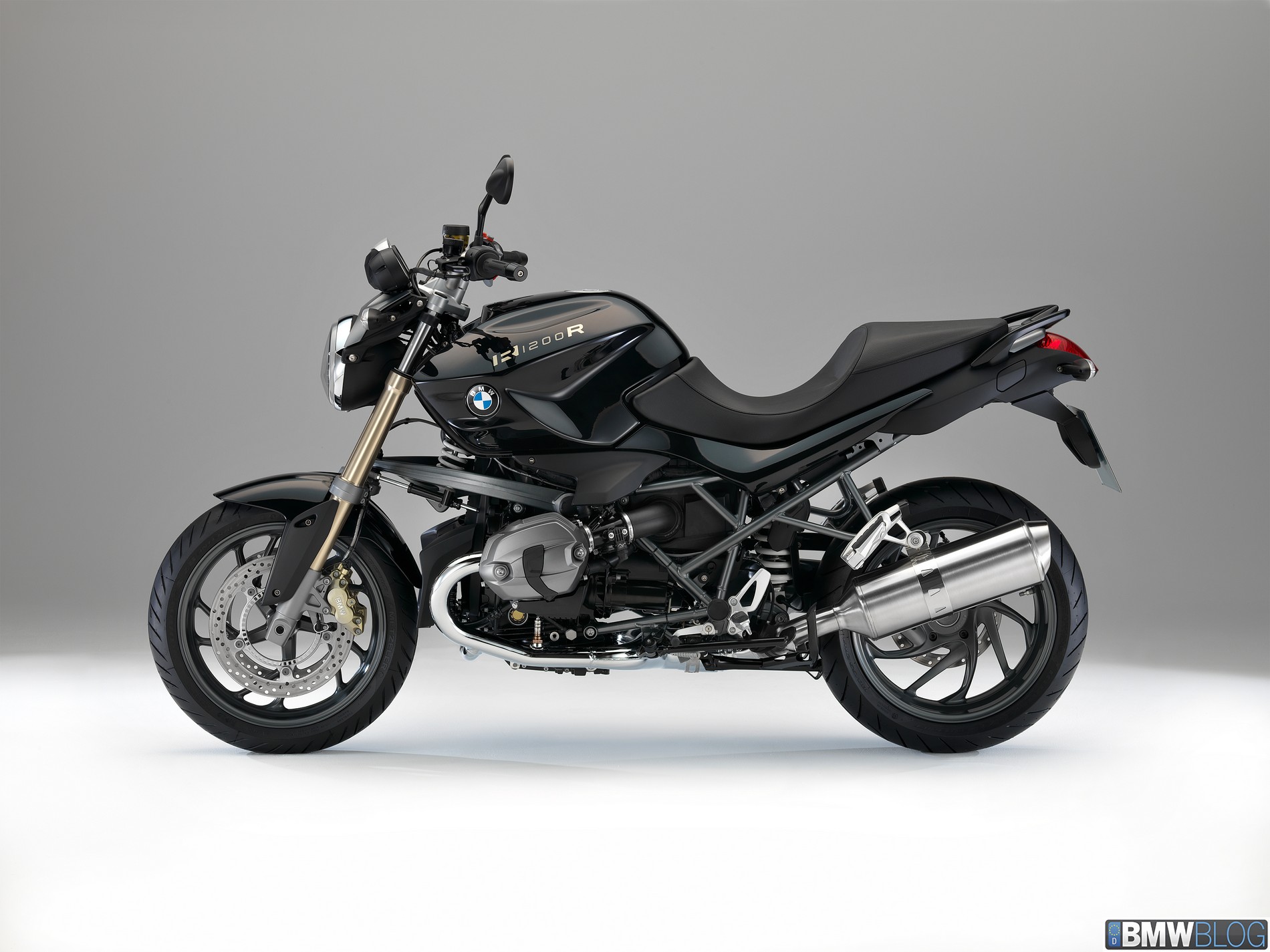BMW-Motorrad
BMW Motorrad is a division of the vehicle and engine manufacturer BMW. The company was founded on March 7, 1916 as Bayerische Flugzeugwerke (BFW ) in Munich and was initially focused on the production of aircraft engines. On July 21, 1917, the company was then renamed Bayerische Motoren Werke GmbH, in 1918 changed its name to Bayerische Motoren Werke AG. Since 1923, the company also manufactures motorcycles, 1928 was added in the automotive manufacturing. Today, BMW is the only major manufacturer of strong displacement motorcycles in Germany and one of the highest turnover in Europe.
History
Already the first motorcycle from BMW, the R 32, had a two- cylinder boxer engine and shaft drive for a long time BMW typical design, which continues to this day among others.
Two years later came with the BMW R 39 added a second series, the combination of a vertically positioned individual cylinders and shaft drive was not quite so typical. For four decades, these two series were the motorcycle range of BMW.
1955 began with the introduction of Full Swing BMW renunciation of the Geradwegfederung. At the same time the shaft drive has been changed so that the bikes not like other tilt during load changes around the lateral axis, but to raise or lower fully. This unique driving behavior led to the nickname Gummikuh.
1966 27 set the single-cylinder engines with the expiry of the BMW R and only continued the two-cylinder model series. Compact cars motorcycles had replaced as the car of the " little man". BMW was the only German manufacturer of motorcycles, whose production capacity- heavy motorcycles survived that. The combination of boxer engine and shaft drive, there were now only from BMW.
1969 BMW came with the newly designed R 75/5 in the then highest displacement class before. But at the same time introduced Honda CB 750 Four with four-cylinder engine introduced a development that made all European motorcycle manufacturer, to the Japanese soon fall behind. When BMW 1973 with the R 90 S nachlegte displacement, the Kawasaki Z1 with bucket tappets had already set another benchmark in the previous year. From then on there were engines from Japan, who were not only stronger than those from BMW, but also had to be less maintenance.
1980 BMW surprised with the R 80 G / S, which was based on the boom of the bikes, which had begun with the Yamaha XT 500. The R 80 G / S was not only the first Enduro by BMW, but also the first Enduro with multi-cylinder engine. From the " Not" the lush shaft swingarm, the designers had made a virtue, by renouncing the second swing arm. A motorcycle with multi-cylinder engine and shaft drive to use in the field, then became more absurd. That changed when BMW won the next Dakar Rally. BMW was after decades at a stroke back in the circle of companies with which to be reckoned in motorcycling.
1983 broke with the K 100 to a new era of motorcycles from BMW. Your screen frame is based on a supporting engine-transmission block. The four-cylinder in-line engine with water cooling is not the usual cross, but arranged along. Thus, it requires no deflection between the crankshaft and propeller shaft. The cylinders are horizontal in order to achieve a low center of gravity as well as with boxer engines. Although the engines were relatively progressive with their fuel injection, they draw the performance limitations of the prior art of their time is not enough. Nevertheless, this drive is considered due to the independent and consistent design as a notable designer performance. From 1988, the K 100 was available as a first motorcycle with anti -lock braking system. As of 1989, the sporty variant K 100 RS was equipped as the first BMW with four-valve technology, decreed as the first motorcycle -way catalytic converters and also about the new Paralever, the driving dynamics equates to the shaft drive chain final drive.
In 1993, BMW, contrary to the previous expression, to not want to develop motorcycles with boxer engine more, the R 1100 RS one. Your engine was the conservative clientele bill, although it was developed from scratch. The overhead camshaft is driven by a timing chain, and operated the valves via rocker arms. Was spectacular on the R 1100 RS, the Telelever system that sinking almost entirely sub-band in a production motorcycle for the first time during braking.
Also in 1993, brought the Bayerische Motoren Werke with the F 650 the first time a motorcycle on the market with an engine they had not even developed yet made themselves. The BMW F 650 is based on the Aprilia Pegaso and how this has a single cylinder engine from Rotax and chain final drive. They were made not by BMW but by Aprilia. The engines of the successor model G 650, the company Loncin manufactures in China.
In 2000, BMW introduced the unusual C1, a covered scooter. Instead of the helmet law, the driver of seat belts are. The C1 was aimed at the market segment between normal motor scooters and small cars like the Smart Fortwo.
2005, a series of conventional transversely mounted four-cylinder engine introduced, along with a built-in four-cylinder engine replaced the series gradually with the BMW K 1200 S. This series is equipped with Duolever.
In 2006, the BMW F 800 with a parallel twin; first with belt final drive, and later with chain final drive. The engines are back from Rotax.
2008 BMW brought the Sport Enduro G 450 X to the market. The single-cylinder engine is manufactured by Kymco in Taiwan.
In 2009, BMW S 1000 RR one. With upside- down fork, transversely mounted four-cylinder engine and chain final drive it resembles the products of Japanese competitors in this class.
On April 8, 2013 BMW Motorcycle and the TVS Motor Company in Chennai, India, have signed a long -term cooperation agreement. Target is the joint development and production of motorcycles in the segment below 500 cubic centimeters.
Berlin plant
Since 1967, motorcycles are the BMW plant in Berlin, in the district Haselhorst the district of Spandau built. Around 1800 people now construct daily up to 550 machines. In 2001 the production of the one millionth motorcycle was celebrated. The Spandau plant is also a major supplier plant for the production of BMW cars. So there, among other things, all brake discs for all car models from BMW are produced. Since 2000, the work, which bears the number 3.1, continuously expanded and modernized. Thus, a further production hall was built for motorcycles from 2001 to 2003. Optical particularly characteristic of the BMW motorcycle production are the yellow "C- hook " that slide into two floors on a rail system through the two assembly halls and where the bikes pass through the various manufacturing steps. Today, the motorcycle production still occurs largely by manual labor. Even the trim on the motorcycles are still painted manually by very experienced staff.
6 May 2011 the factory was the two millionth BMW motorcycle from the tape. It was an R 1200 GS.
2012 BMW brought the models G 650 GS G 650 GS Sertão again and touring bikes with single-cylinder engines on the market after the entry models with two-cylinder engines from Rotax had been finished for several years.
Police motorcycles
The German states provided their motorcycle squadrons almost exclusively with BMWs. Due to legal regulations stipulate a Europe-wide tender is usually necessary. It received eg in Berlin (2008 ) and Hesse (2005) for economic reasons, Moto Guzzi and Yamaha the contract. The tender in 2012 for Motorcycles in Berlin authorities could, however, as in Hesse (2010), again choose the BMW R 900 RT for themselves.
Among other things, the police drive in the following states police motorcycles from BMW: Netherlands, France, Italy, Austria, Switzerland, Croatia, Denmark, Spain ( Guardia Civil), Poland, Russia, Britain, Algeria, USA, Egypt, Thailand, Kuwait and the Republic of China.
Current model range
Under light change of chassis and fairing, BMW models of the following types (visual letters behind the engine displacement denote the model, such as " GS" for " terrain & road " ):
R- series
- Fully fueled naked bike, Luft-/ölgekühlter two-cylinder boxer engine, 1,170 cc, 81 kW/110 hp, 119 Nm, 198 kg dry, 223 kg Kerb & R 1200 R
- Fully fueled Cafe Racer, Luft-/ölgekühlter two-cylinder boxer engine, 1,170 cc, 81 kW/110 hp, 119 Nm, 192 kg dry, 222 kg Kerb & R ninet
- R 1200 RT: Tourer, Luft-/Flüssigkeitsgekühlter two-cylinder boxer engine, 1,170 cc, 92 kW/125 hp, 125 Nm, 274 kg Kerb & fully fueled
- R 900 RT: emergency vehicle, Luft-/ölgekühlter two-cylinder boxer engine, 878 cc, 61 kW/83 hp, 83 Nm, 229 kg dry
- R 1200 GS: full tank enduro, Luft-/Flüssigkeitsgekühlter two-cylinder boxer engine, 1,170 cc, 92 kW/125 hp, 125 Nm, 238 kg Kerb &
- Fully fueled enduro, Luft-/Flüssigkeitsgekühlter two-cylinder boxer engine, 1,170 cc, 92 kW/125 hp, 125 Nm, 260 kg Kerb & R 1200 GS Adventure ( K51 )
K- series
- K 1300 S: Sports Tourer, water -cooled inline four- cylinder engine, 1,293 cc, 129 kW/175 hp, 140 Nm, 228 kg dry
- K 1300 R: Naked bike, water -cooled inline four- cylinder engine, 1,293 cc, 127 kW/173 hp, 140 Nm, 217 kg dry
- K 1600 GT Tourer, water -cooled in-line six -cylinder engine, 1,649 cc, 118 kW/160 hp, 175 Nm, 295 kg dry
- K 1600 GTL: luxury tourer, water -cooled in-line six -cylinder engine, 1,649 cc, 118 kW/160 hp, 175 Nm, 321 kg dry
- K 1600 GTL Exclusive: luxury tourer, water -cooled in-line six -cylinder engine, 1,649 cc, 118 kW/160 hp, 175 Nm, ? kg dry
F- series
- F 700 GS: enduro: Water-cooled two-cylinder four -stroke engine ( parallel twin ), 798 cc, 55 kW/75 hp and 77 Nm, 186 kg dry
- F 800 GT: Sports Tourer, water -cooled two-cylinder four -stroke engine ( parallel twin ), 798 cc, 66 kW/90 hp and 86 Nm? kg dry
- F 800 GS: enduro: Water-cooled two-cylinder four -stroke engine ( parallel twin ), 798 cc, 63 kW/85 hp, 83 Nm, 191 kg dry
- F 800 R: Naked Bike: Water-cooled two-cylinder four -stroke engine ( parallel twin ), 798 cc, 64 kW/87 hp and 86 Nm, 177 kg dry
- F 800 GS Adventure: enduro: Water-cooled two-cylinder four -stroke engine ( parallel twin ), 798 cc, 63 kW/85 hp, 83 Nm
G- series
- G 650 GS: enduro, Water-cooled single-cylinder engine, 652 cc, 48 hp, 60 Nm, 175 kg dry
HP series
- BMW HP4: Super Athletes, water -cooled inline four- cylinder engine, 999 cc, 142 kW/193 hp at 13,000 min-1, 199 lbs Test (incl. Race ABS)
S- series
- BMW S 1000 RR: Super Athletes, water -cooled inline four- cylinder engine, 999 cc, 142 kW/193 hp at 13,000 min -1, 204.5 kg in running order (incl. Race ABS)
- BMW S 1000 R: Naked bike, water -cooled inline four- cylinder engine, 999 cc, 118 kW/160 hp at 11,000 min-1, 207 lbs Test
C- series
- BMW C 600 Sport: Maxi scooters, water -cooled two-cylinder four -stroke engine, 650 cc, 44 kW/60 hp, 66 Nm, 237 kg dry
- BMW C 650 GT Maxi - Scooter, water -cooled two-cylinder four -stroke engine, 650 cc, 44 kW/60 hp, 66 Nm, 249 kg dry

